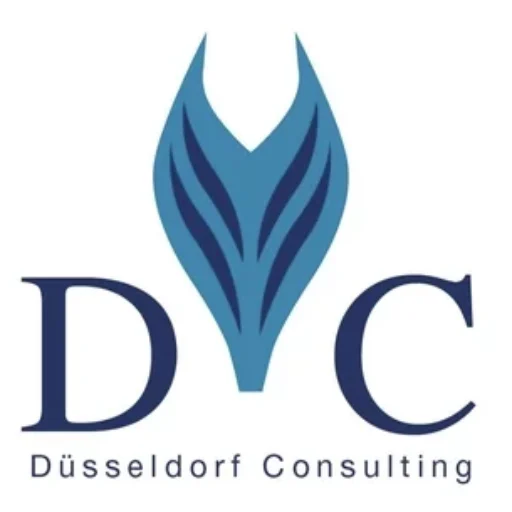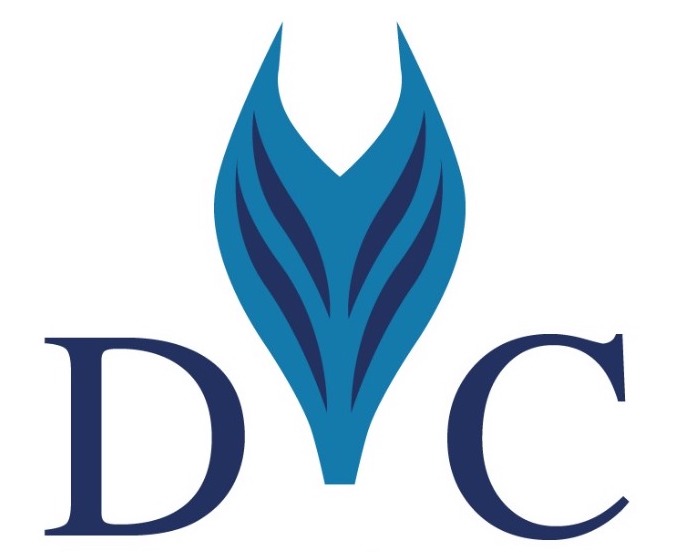The healthcare industry in Germany is experiencing significant growth, driven by factors such as an aging population and technological advancements. As the largest European market and the third-largest medical technology market globally, Germany’s healthcare sector generates an economic footprint of EUR 775 billion, roughly 12% of the country’s GDP.
Düsseldorf Consulting GmbH, a renowned consulting firm based in Düsseldorf, provides expert insights into the industry’s trends and developments. With a strong presence in the European market, healthcare consulting services are poised for continued expansion.
Key Takeaways
- Germany’s healthcare industry is a significant contributor to the country’s economy.
- The sector is driven by an aging population and technological advancements.
- Düsseldorf Consulting GmbH provides expert insights into the industry’s trends and developments.
- The healthcare sector is poised for continued expansion.
- Germany’s healthcare services are characterized by high-quality medical facilities and advanced technology.
Overview of Germany’s Healthcare Landscape
The healthcare landscape in Germany is characterized by a robust infrastructure and a well-trained workforce. With a strong emphasis on medical technology and pharmaceuticals, Germany’s healthcare sector is a significant player globally.
Germany’s healthcare industry is one of the largest and most lucrative in the world. The German medical device market alone accounts for roughly USD 42 billion annually. Moreover, the healthcare industry employs almost 8.1 million people, or 17.7% of the total workforce in Germany, making it a vital component of the country’s economy.
The industry is dominated by key players in the medical technology and pharmaceutical sectors. Companies like Siemens Healthineers and Bayer are leading the way in innovation and healthcare solutions. The government plays a crucial role in shaping the healthcare landscape through regulations and policies that ensure high-quality care and accessibility for the population.
Recent developments in the healthcare sector have been influenced by various factors, including technological advancements and demographic changes. For instance, the integration of digital health solutions has been a significant trend, enhancing patient care and operational efficiency. According to a study published on PMC, the adoption of digital technologies in healthcare is transforming the way services are delivered.
Key Statistics in Germany’s Healthcare Sector
| Category | Value | Description |
|---|---|---|
| Medical Device Market | USD 42 billion | Annual revenue from medical devices |
| Workforce in Healthcare | 8.1 million | Total number of people employed in the healthcare sector |
| Percentage of Total Workforce | 17.7% | Proportion of the total workforce in Germany employed in healthcare |
In conclusion, Germany’s healthcare landscape is marked by its strong infrastructure, significant market size, and innovative industry players. As the sector continues to evolve, driven by technological advancements and changing demographics, it is likely to remain a critical component of Germany’s economy and a model for healthcare systems globally.
Trends Driving Growth in the Sector
Several key trends are currently driving growth in Germany’s healthcare sector. The country’s healthcare market is experiencing significant changes due to various factors, including technological advancements and demographic shifts.
The aging population in Germany is a major driver of growth in the healthcare sector. According to recent statistics, the number of people in need of care increased from 3.9 million in 2018 to 5.6 million in 2023. This surge in demand for healthcare services is prompting innovations in care delivery and technology.
Technological advancements are also playing a crucial role in the growth of Germany’s healthcare sector. The development of new alloys and bio-based materials is enhancing implants, pharmaceuticals, and medical devices. These advancements are not only improving patient outcomes but also contributing to the overall efficiency of the healthcare system.
Key Trends in Germany’s Healthcare Sector
| Trend | Description | Impact |
|---|---|---|
| Aging Population | Increasing demand for care services | Higher demand for healthcare services and innovations in care delivery |
| Technological Advancements | Development of new materials and devices | Improved patient outcomes and efficiency in healthcare delivery |
| Increased Health Awareness | Greater focus on preventive care | Early diagnosis and treatment, reducing healthcare costs |
The phrase “ACTA NON VERBA” or “deeds not words” is particularly relevant in the context of Germany’s healthcare sector, where tangible actions and innovations are driving growth and improving patient care. As the sector continues to evolve, it is likely that we will see further advancements in technology and care delivery.
Healthcare market research in Germany indicates a positive outlook for the sector, driven by these key trends. Understanding these trends is crucial for stakeholders looking to invest or participate in Germany’s healthcare market.
Impact of Digital Health Solutions
Digitalization is leading to higher quality medical care at lower costs in Germany’s healthcare market. The secure exchange of health information is becoming increasingly important as the country embraces digital health solutions.
The healthcare sector in Germany is witnessing a significant transformation with the integration of telemedicine, mobile health applications, and AI in diagnostics. These digital health innovations are not only improving patient outcomes but also increasing efficiency within the healthcare system.
One of the key areas of growth is telemedicine, which allows patients to consult with healthcare professionals remotely. This has been particularly beneficial in reducing the burden on hospitals and clinics, especially during times of high demand.
The use of mobile health applications is another significant trend. These apps enable patients to monitor their health, manage chronic conditions, and access medical information more easily.
AI in diagnostics is also revolutionizing the healthcare landscape. AI algorithms can analyze medical images and patient data to help diagnose conditions more accurately and quickly than traditional methods.
Key Statistics on Digital Health Adoption
| Digital Health Solution | Adoption Rate (%) | Impact |
|---|---|---|
| Telemedicine | 45 | Increased patient access to care |
| Mobile Health Apps | 60 | Improved patient engagement |
| AI in Diagnostics | 30 | Enhanced diagnostic accuracy |
As digital health solutions continue to evolve, it’s clear that they will play a crucial role in shaping the future of Germany’s healthcare market. With the headquarters of major healthcare companies located in cities like Düsseldorf (Königsallee 22, 40212 Düsseldorf), the country is poised to leverage these innovations to drive growth and improve healthcare outcomes.
Investment Opportunities in Healthcare
Germany’s healthcare industry is becoming increasingly attractive to investors, with trends indicating a rise in venture capital funding and mergers and acquisitions. The sector’s growth is driven by a combination of factors, including an aging population, the need for innovative healthcare solutions, and advancements in medical technology.
The German healthcare industry is witnessing a significant surge in venture capital investment, with many startups and established companies alike seeking funding to develop and commercialize new healthcare technologies. Düsseldorf Consulting GmbH provides expert insights into the investment landscape, highlighting trends and opportunities in venture capital, mergers and acquisitions, and public-private partnerships.

One of the key drivers of investment in the German healthcare sector is the growing demand for digital health solutions. This includes telemedicine, health informatics, and personalized medicine, all of which are transforming the way healthcare is delivered. Investors are taking notice of the potential for these technologies to improve patient outcomes and reduce healthcare costs.
In addition to digital health, mergers and acquisitions are also on the rise in the German healthcare industry. Companies are looking to consolidate and expand their offerings, driving growth through strategic acquisitions and partnerships. This trend is expected to continue, with many investors seeing opportunities for long-term returns in the sector.
The role of public-private partnerships is also crucial in driving investment in the healthcare sector. By collaborating with government agencies and private investors, companies can access funding and resources to develop new healthcare technologies and services. Düsseldorf Consulting GmbH highlights the importance of these partnerships in shaping the future of the German healthcare industry.
In conclusion, the German healthcare industry presents numerous investment opportunities, driven by a growing demand for healthcare services and innovative technologies. With the right insights and strategies, investors can capitalize on the trends shaping the sector and achieve long-term success.
Regulatory Environment Navigating Challenges
Understanding the regulatory framework is essential for success in Germany’s healthcare market. The industry is subject to a complex set of regulations, including the EU Medical Device Regulation (MDR) and the In Vitro Diagnostic Regulation (IVDR), which have significantly impacted the sector.
The MDR and IVDR regulations have introduced stricter requirements for medical device manufacturers and in vitro diagnostic companies. These regulations aim to enhance patient safety and ensure that medical devices and diagnostics meet high standards of quality and efficacy.
Key Regulatory Challenges:
- Compliance with stringent quality standards
- Adherence to data privacy laws, such as GDPR
- Navigation of complex regulatory pathways for new product approvals
Companies operating in Germany’s healthcare sector must be proactive in addressing these challenges. This involves investing in compliance infrastructure and staying abreast of regulatory updates to ensure they remain compliant with evolving regulations.
The regulatory environment also presents opportunities for companies that can adapt quickly to changes. By leveraging digital health solutions and innovative technologies, businesses can not only comply with regulations but also drive growth in the sector.
In conclusion, navigating the regulatory landscape in Germany’s healthcare sector requires a deep understanding of the current regulations and a proactive approach to compliance. By doing so, companies can position themselves for success in this dynamic market.
Regulatory Compliance Strategies
Effective compliance strategies involve several key elements, including:
- Regular training for staff on regulatory requirements
- Implementation of robust quality management systems
- Engagement with regulatory authorities to stay informed about upcoming changes
By adopting these strategies, companies can mitigate the risks associated with non-compliance and capitalize on the opportunities presented by Germany’s thriving healthcare sector.
Workforce Changes and Challenges
Workforce dynamics in Germany’s healthcare are shifting dramatically. The healthcare industry employs almost 8.1 million people, and this number is expected to grow due to an aging population and an increased focus on healthcare services.
The demand for healthcare professionals is on the rise, driven by the need for specialized care and the challenges posed by an aging workforce. Training and education initiatives are crucial in addressing these challenges by preparing the next generation of healthcare professionals.
Foreign specialists are playing an increasingly important role in Germany’s healthcare sector. They help fill the gaps in the workforce, particularly in areas with high demand. Companies like Düsseldorf Consulting GmbH are involved in healthcare market research to understand the trends and challenges better.
The key challenges facing the healthcare workforce in Germany include:
- Insufficient staffing in certain regions
- Aging workforce and retirement of experienced professionals
- Need for continuous education and training
- Integration of foreign healthcare professionals
To address these challenges, the German healthcare system is focusing on:
- Enhancing training programs for healthcare professionals
- Improving working conditions to retain staff
- Streamlining the process for recruiting foreign healthcare workers
By understanding these workforce changes and challenges, stakeholders in the healthcare sector can better navigate the complexities of healthcare market research in Germany. This knowledge is essential for developing effective strategies to meet the growing demand for healthcare services.
Innovations in Medical Technology
Innovations in medical technology are transforming Germany’s healthcare landscape, driven by cutting-edge research and development. Germany is a leader in medical technology innovation, with breakthroughs in treatment devices and personalized medicine. Research institutions play a crucial role in driving these innovations.
The medical technology industry in Germany is experiencing rapid growth, with significant investments in research and development. Companies based in major cities like Düsseldorf, known for its vibrant business environment at locations such as Königsallee 22, 40212 Düsseldorf, are at the forefront of this innovation.
Key Areas of Innovation
- Advanced diagnostic equipment
- Personalized medicine tailored to individual patient needs
- Innovative treatment devices that improve patient outcomes
Personalized medicine is one of the key areas where German medical technology is making significant strides. By tailoring treatments to individual patient profiles, healthcare providers can achieve better outcomes and improve patient care.
The future of medical technology in Germany looks promising, with continued investment in research and development expected to drive further innovations. As the industry evolves, we can expect to see even more sophisticated treatment options and diagnostic tools.
Patient-Centric Care Approaches
Patient-centric care is revolutionizing the healthcare landscape in Germany, emphasizing personalized treatment plans and enhanced patient engagement. This approach is driven by the need for improved patient outcomes and increased efficiency in the healthcare system.
The integration of services is a critical component of patient-centric care. By streamlining healthcare delivery, providers can ensure that patients receive comprehensive and coordinated care. This not only enhances patient satisfaction but also contributes to healthcare industry growth by reducing unnecessary hospital readmissions and improving overall health outcomes.

Patient feedback is another vital aspect of patient-centric care. By actively seeking and incorporating patient feedback, healthcare providers can identify areas for improvement and make data-driven decisions to enhance their services. This feedback loop is essential for driving continuous improvement in healthcare delivery and ensuring that services meet the evolving needs of patients.
Enhancing accessibility is also a key focus of patient-centric care approaches. This involves leveraging digital health solutions, such as telemedicine and mobile health applications, to expand access to healthcare services. By making healthcare more accessible, providers can reach a wider patient population and improve health outcomes, particularly for underserved communities.
The adoption of patient-centric care approaches is providing valuable Germany healthcare industry insights. As the healthcare sector continues to evolve, understanding the impact of these approaches on patient outcomes and industry growth will be crucial for stakeholders. By prioritizing patient needs and preferences, healthcare providers can drive meaningful change and contribute to a more sustainable and effective healthcare system.
In conclusion, patient-centric care is transforming the healthcare landscape in Germany. By focusing on patient feedback, integration of services, and enhancing accessibility, healthcare providers can improve patient outcomes and drive industry growth. As the sector continues to evolve, the insights gained from patient-centric care approaches will be invaluable in shaping the future of healthcare delivery.
Influence of Global Health Trends
Global health trends are shaping the future of Germany’s healthcare sector, driven by international collaborations and innovations. The country’s healthcare system is increasingly influenced by global developments, adopting best practices from international models and collaborating with global entities to enhance patient care and operational efficiency.
Germany’s healthcare industry is responding to global health challenges, such as the COVID-19 pandemic, by leveraging its resilience and adaptability. According to a report by the OECD, Germany’s healthcare system demonstrated significant flexibility during the pandemic, rapidly adapting to the crisis by implementing telehealth solutions and streamlining healthcare delivery processes. The OECD report highlights the importance of international cooperation in addressing global health issues.
The influence of global health trends is also evident in the adoption of digital health technologies. Germany is investing heavily in digital health infrastructure, including electronic health records and telemedicine platforms, to improve healthcare accessibility and quality. This shift towards digitalization is supported by collaborations with international tech companies and healthcare providers, facilitating the exchange of knowledge and best practices.
Key areas of influence include:
- Digital health innovations
- International collaborations and knowledge sharing
- Response to global health crises
- Adoption of best practices from global models
As noted by health experts, “The integration of global health trends into Germany’s healthcare system is crucial for enhancing its resilience and responsiveness to future health challenges.” This sentiment is echoed in the healthcare community, with many professionals advocating for continued investment in digital health and international cooperation.
“The COVID-19 pandemic has underscored the need for robust and adaptable healthcare systems. Germany’s response to the crisis, including its embrace of telehealth and digital health records, serves as a model for other countries.”
In conclusion, global health trends are significantly influencing Germany’s healthcare sector, driving innovations, and enhancing the system’s resilience. As the healthcare landscape continues to evolve, Germany’s proactive approach to adopting global best practices and collaborating with international entities will be crucial in shaping its future healthcare delivery.
Regional Disparities in Healthcare Delivery
The healthcare landscape in Germany varies greatly across different regions, presenting a challenge for equitable healthcare access. Urban areas like Düsseldorf, with addresses such as Königsallee 22, 40212 Düsseldorf, often have well-equipped healthcare facilities, whereas rural areas face shortages in medical personnel and infrastructure.
Urban vs. Rural Healthcare Access: One of the significant challenges is the disparity between urban and rural healthcare access. Rural areas suffer from a lack of specialized care services and longer travel times to reach healthcare facilities. This disparity is reflected in German healthcare growth statistics, which show varying healthcare outcomes across regions.
To address these disparities, the German government has initiated policies aimed at improving regional healthcare delivery. Investments in healthcare infrastructure, particularly in rural areas, are part of the strategy to ensure more uniform access to healthcare services. These efforts are expected to positively impact healthcare market trends in Germany, promoting a more balanced healthcare landscape.
Regional Healthcare Policies: Regional healthcare policies play a crucial role in addressing the disparities. By implementing targeted policies, regions can better allocate resources to areas of need, enhancing the overall efficiency of the healthcare system. This includes training more healthcare professionals for rural areas and investing in telemedicine to bridge the gap in healthcare access.
The impact of these initiatives can be seen in the gradual improvement in healthcare outcomes across different regions. As German healthcare growth statistics indicate, regions that have received targeted investments show better healthcare delivery metrics, contributing to a more equitable national healthcare system.
Future Outlook for Germany’s Healthcare Sector
With an aging population and significant investments in digital health, Germany’s healthcare market is on the cusp of a new era of growth. According to Düsseldorf Consulting GmbH, the sector is expected to continue expanding, driven by emerging challenges and innovative solutions.
The aging population in Germany is a significant driver of growth in the healthcare sector. As the population ages, there is an increasing demand for healthcare services, including long-term care and management of chronic conditions. This demographic shift is expected to continue, with a substantial impact on the healthcare industry.
Key Growth Areas
- Medical Technology: Innovations in medical devices and diagnostic equipment are expected to drive growth.
- Pharmaceuticals: The pharmaceutical sector is anticipated to expand, driven by research and development of new treatments.
- Digital Health: Investments in digital health solutions, including telemedicine and health informatics, are set to transform the healthcare landscape.
The future outlook for Germany’s healthcare sector is positive, with a strong focus on innovation and patient-centric care. As the industry continues to evolve, it is likely that new challenges and opportunities will emerge, shaping the future of healthcare delivery in Germany.
The integration of digital health solutions is expected to play a crucial role in the future of Germany’s healthcare sector. By leveraging technologies such as artificial intelligence and data analytics, healthcare providers can improve patient outcomes and streamline clinical workflows.
As the healthcare sector continues to grow, it is essential for stakeholders to stay informed about the latest trends and developments. By doing so, they can capitalize on emerging opportunities and navigate the challenges that lie ahead.
Conclusion: Navigating the Future of Healthcare
The German healthcare sector is poised for continued growth, driven by key trends and developments in the industry. As discussed, Germany healthcare industry insights reveal a landscape shaped by digital health solutions, investment opportunities, and regional disparities.
To succeed in this evolving environment, stakeholders must navigate these changes with a focus on innovation and patient-centric care. The healthcare sector developments in Germany underscore the need for adaptability and forward thinking.
As the industry continues to transform, ACTA NON VERBA – actions speak louder than words. It is essential to turn insights into tangible outcomes, driving progress in the German healthcare sector.




